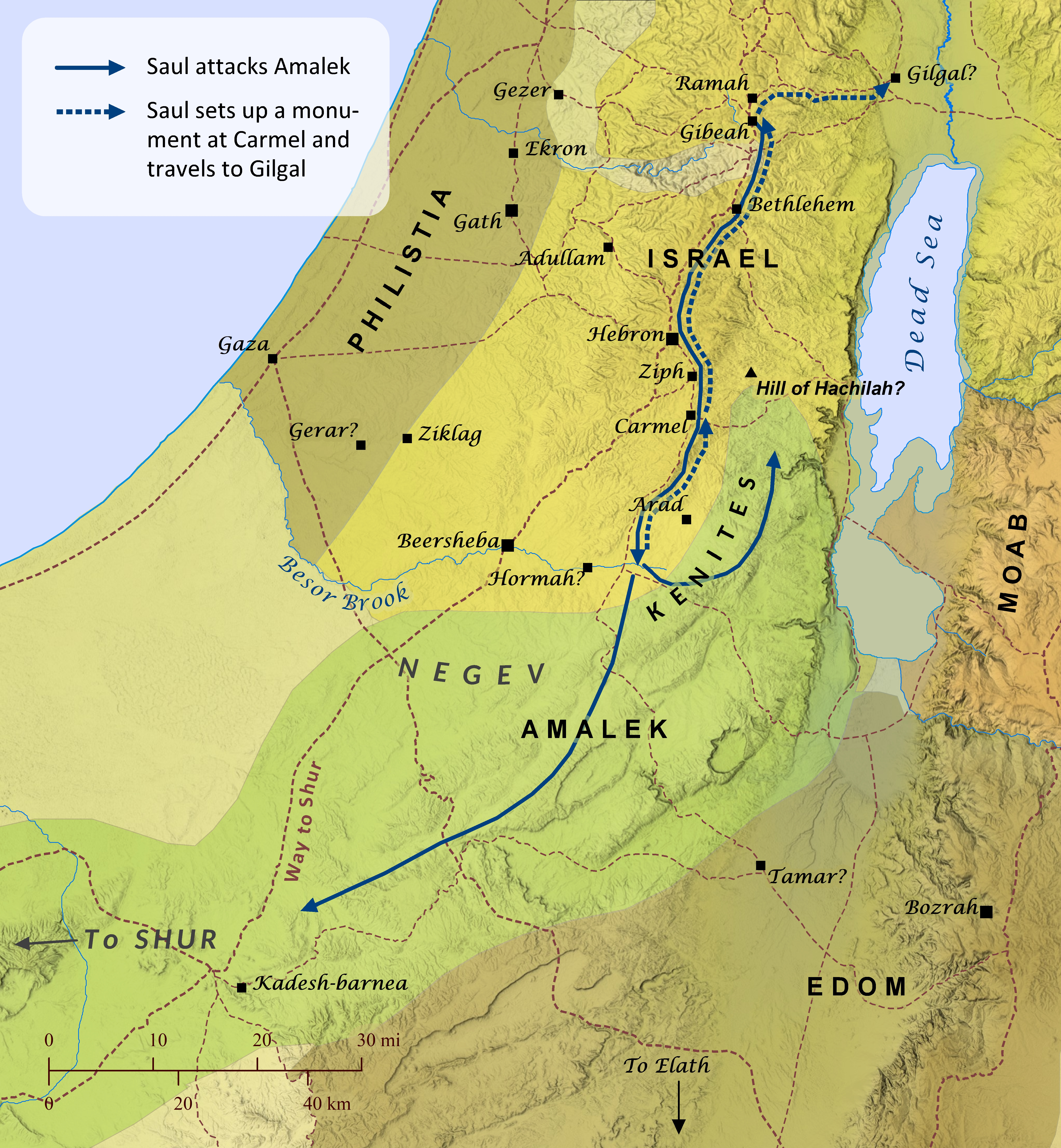
Saul Attacks the Amalekites
1 Samuel 15
Saul’s war against the Amalekites exemplifies many of the key traits–good and bad–of Saul’s leadership over Israel. Immediately before the story is recounted, the author notes that during Saul’s entire reign he fought valiantly against Israel’s enemies on every side (1 Samuel 14:47-52), and he amassed an army of skilled soldiers. Thus, Saul fulfilled one of the primary reasons the people demanded that Samuel appoint a king over them (1 Samuel 8). Then the author notes that the Lord, through Samuel, directed Saul to attack the Amalekites and utterly destroy them and their belongings as punishment for their cruel attack on the Israelites after they left Egypt to travel to Mount Sinai (Exodus 17; Deuteronomy 25:17-19). So Saul mustered a large number of troops at a place called Telaim and traveled to an otherwise unknown “city of the Amalekites” and lay in lay in wait for them in a valley. Saul also warned the Kenites, the descendants of Moses’ father-in-law Hobab (also called Jethro), to move away from the Amalekites so they would not be killed in the coming battle. It appears that the Kenites had remained on good terms with the Israelites since the time of Hobab/Jethro and accompanied them as they entered the Promised Land, eventually settling among the Amalekites in the Negev near Arad (Judges 1:16). Saul defeated the Amalekites, pursuing them “from Havilah as far as Shur,” according the the Hebrew text. The region of Havilah, however, was several hundred miles from the Negev, making it unlikely to be the place to which Saul pursued them, and this is underscored by the Septuagint’s substitution of “Elath” for “Havilah”. It is possible that the author was using this phrase as a hyperbolic merism to indicate that Saul pursued the Amalekites throughout the entire land in which they lived (see also Genesis 25:18 regarding the Ishmaelites). But since elsewhere in Scripture the Amalekites are said to live in the Negev and in southern Canaan (Genesis 14:7; Numbers 13:29; 14:45; Judges 1:16), another possibility is that the “Havilah” reading is a textual corruption. The Septuagint translators may have preserved the original reading of “Elath,” or they may have been making their best guess as to the intended location. Simply based on the similarity of spelling and the geography of the region (as shown on this map), it is possible that the original reading was “Hachilah,” a hill where David would later have some close encounters with Saul during his time in the wilderness (1 Samuel 23:19; 26:1). In any case, Saul and his men thoroughly defeated the Amalekites, but they failed to completely destroy them (see 1 Samuel 30) and their belongings. Instead they took King Agag alive and kept the best of the spoils. After this Saul traveled to Carmel and set up a monument for himself, and then he continued on to Gilgal. When Samuel arrived in Gilgal, however, he was angry with Saul for failing to devote all of the Amalekites and their goods to destruction, and he told Saul that the Lord regretted having made him king. Samuel then killed King Agag himself at Gilgal and returned to his home in Ramah. Saul returned to his home in Gibeah, but Samuel never spoke with Saul again.